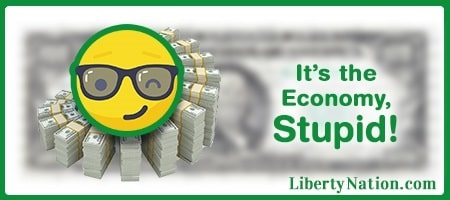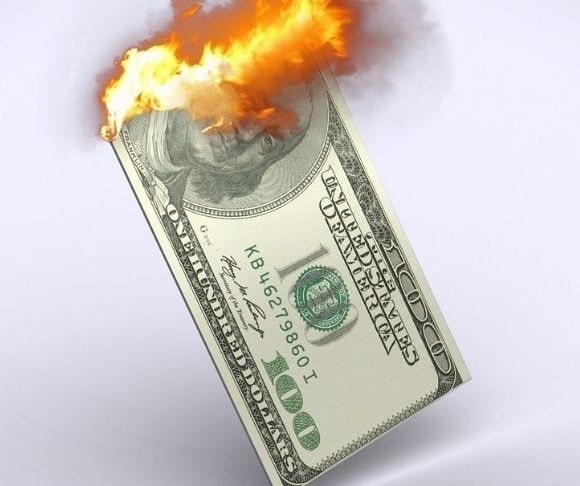Bidenflation is running wild in America. The cost of everything, from food to energy to automobiles, is skyrocketing. The latest U.S. government data suggest there is no respite in sight for households and businesses. But the White House and the Federal Reserve ostensibly have two prescriptions: spend more and print more. Is this a viable strategy in an inflationary environment that has morphed from transitory to seemingly permanent? It might be cool outside, but it is sizzling on the inflation front.
October Inflation Sizzles
 According to the Bureau of Labor Statistics (BLS), the annual inflation rate surged to 6.2% in October, topping market estimates of 5.8%. This was up from the 5.4% gain in September and represented the highest inflation reading since November 1990. On a monthly basis, inflation advanced 0.9%, outpacing the median forecast of 0.6%. This was also more than double the figure in the previous month.
According to the Bureau of Labor Statistics (BLS), the annual inflation rate surged to 6.2% in October, topping market estimates of 5.8%. This was up from the 5.4% gain in September and represented the highest inflation reading since November 1990. On a monthly basis, inflation advanced 0.9%, outpacing the median forecast of 0.6%. This was also more than double the figure in the previous month.
The core inflation rate, which strips the volatile food and energy sectors, increased 4.6%, slightly higher than economists’ expectations of 4.3%. Month-over-month, the core inflation reading edged up 0.6%.
The key finding from the monthly snapshot was that inflation was broad-based as nearly everything became costlier in the marketplace. Here is a look at the consumer price index (CPI) for all urban spenders in the 12 months ending in October:
- Food: +5.3%
- Energy: +30%
- New Automobiles: +8.4%
- Used Cars and Trucks: +9.8%
- Apparel: +4.3%
- Shelter: +3.5%
- Transportation Services: +4.5%
- Medical Care Services: +1.7%
The report highlighted sharp gains for meats, poultry, fish, beef, and eggs, soaring as much as 20.1% from a year ago. Moreover, the cost for cereals, bakery products, fruits, and vegetables rose between 0.1% and 1.1%. Consumers should not anticipate saving money at nearby restaurants or coffee shops, as the food away from home index climbed 5.3% year-over-year.
 As expected, energy was the biggest driver of inflation to kick off the fourth quarter of 2021. The gasoline index jumped 6.1%, the fifth consecutive monthly gain. The natural gas index advanced 6.6%, while the fuel oil index spiked 12.3%.
As expected, energy was the biggest driver of inflation to kick off the fourth quarter of 2021. The gasoline index jumped 6.1%, the fifth consecutive monthly gain. The natural gas index advanced 6.6%, while the fuel oil index spiked 12.3%.
How the Markets Are Reacting
The financial markets were not enthusiastic over the news in pre-market trading, with the leading benchmarks in the red after posting fresh record finishes earlier this week. The Dow Jones Industrial Average, the S&P 500, and the Nasdaq Composite Index were slightly lower before the opening bell.
Metal commodities rallied midweek. Gold futures picked up 1%, while silver prices tacked on 1.2%. The cryptocurrencies also extended their gains: Bitcoin surged 1.34%, and Ethereum added 0.8%. The U.S. Treasury market was mostly in the green, with the benchmark 10-year yield up 0.025% to 1.474%. The one-year bill jumped 0.023% to 0.16%, while the 30-year bond rose 0.005%.
Ipek Ozkardeskaya, a Senior Analyst at Swiss Quote, said in a research note before the inflation data:
“One thing is sure, the rising inflation doesn’t seem to sour the market mood as much as it did a couple of months earlier, as investors are well conscious that the Fed will continue turning a blind eye on the problem, regardless of who will take the helm in February. Therefore, we may not see a negative market reaction to the overheating in inflation.
It’s also important to note that real yields are under a decent pressure and the low risk, low yielding assets are now increasingly negative yielding when adjusted to inflation. The negative real yields make the equity markets look like the only alternative to deal with the rising inflation, other than the cryptos, of course!”
What’s Next in the Biden Economy?
President Joe Biden and his administration have previously dismissed sizzling inflation as evidence that the economic recovery is proceeding as expected, marketing it as a strong United States economy. But while officials put on a happy face, U.S. consumers are enduring a perfect storm of economic challenges, particularly supply shortages and a soaring cost of living. Will the 2022 mid-term elections serve as an indictment on Bidenomics? When Americans see that a buck buys a nickel’s worth, all the cheery language and desperate pleas may not be enough for the public to turn a blind eye to everything going wrong in the post-pandemic economy.
~ Read more from Andrew Moran.




